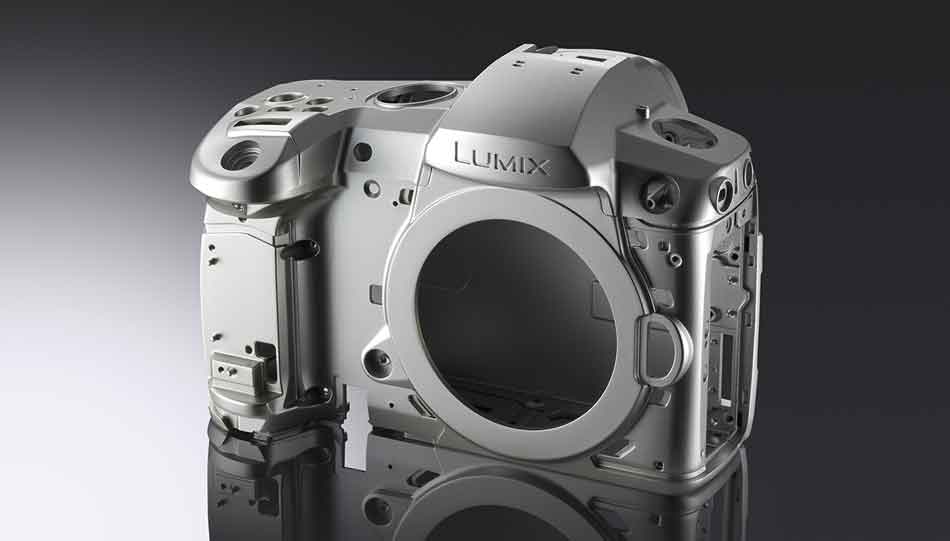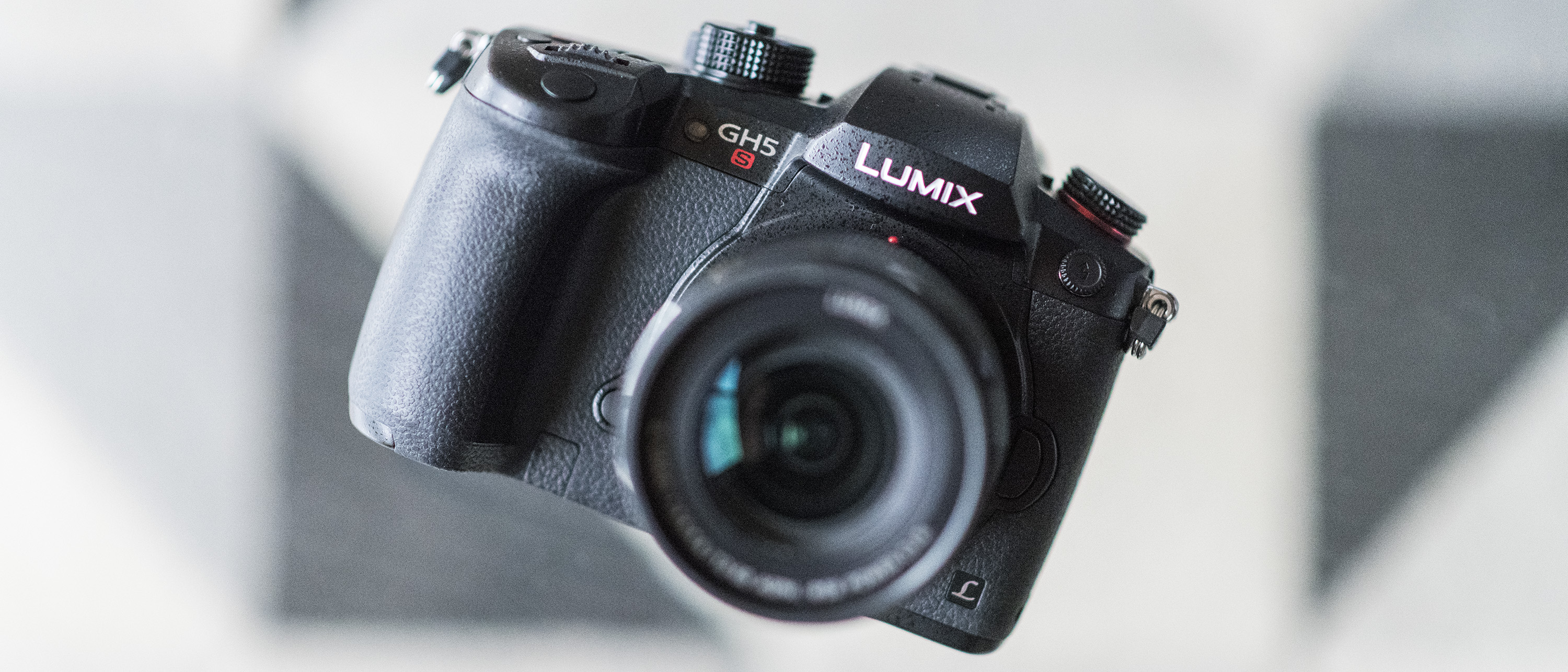Why you can trust TechRadar
Build quality and handling
- Design virtually unchanged from GH5S
- Magnesium alloy frame
- Weather-sealed
The design of the Lumix GH5S is virtually indistinguishable from that of the GH5; the only things that denote the GH5S are the flash of red around the collar of the mode dial on the top of the camera, and a more pronounced red record button (and of course the 'S' designation on the front).
Considering this is a mirrorless camera the design is quite chunky, but the GH5S feels nice and sturdy in the hand thanks to the large, purposeful grip. This is aided by the magnesium alloy full die-cast front and rear frame, while there's a decent amount of weather-sealing too, with the camera being dust-proof, splash-proof, and freeze-proof down to -10C. Like the GH5 it's equipped with dual SD memory card slots, compatible with UHS-II and Video Speed Class 60 SDXC cards, while there's also a HDMI Type A terminal.

As the GH5S apes the GH5 design-wise, it does mean there's no top plate LCD display like we've seen on the Lumix G9, but either side of the pentaprism are chunky drive and mode dials, while just behind the front command dial are buttons for accessing White Balance, ISO and exposure compensation. As on the GH5, all three buttons are finished slightly differently: the White Balance button is convex-shaped, the ISO one is flat with two little dimples on it, and the exposure compensation button is concave. This is a nice little touch, as when you have the camera raised to your eye it means you should know which of the three controls you’re accessing just by feel.
If you're coming across from the GH5 you'll feel right at home, especially as the menu system is virtually identical as well.
Autofocus
- Same 225-area AF system as GH5
- Useful Focus Transition function
- Broad range of focus peaking modes
With many of the GH5's other features carried over, it's no surprise to see that the 225-area AF system has also made it across to the GH5S.
Unlike a lot of rival cameras that use a hybrid system of both phase-detect and contrast-detect AF, the GH5S relies solely on the slower contrast-detect system. That said, focusing is still brisk (with a claimed AF speed of just 0.05 secs), while the GH5S can also focus in light levels as low as -5EV, which is darker than moonlight.
As well as Multi AF there's also a Custom Multi mode, which enables you to freely select the AF-area group, or Zone AF, in which the focus area group size and position can be customized.
For video the GH5S sports what Panasonic calls a 'Focus Transition' mode – again, something that first appeared on the GH5. This enables you to define up to three focus depths before you begin recording, then switch between them as you shoot. You can also choose the focus transition speed (five variations), so you can opt for smooth transitions or snappy changes in focus.
If you're focusing manually (something we'd expect to see users doing a lot with the Lumix GH5S), then there are a few focus peaking options available to you. These include both high- and low-intensity options, as well as the option to have the highlights edges shown in pink, white, cyan, yellow or green.
Current page: Build, handling and AF
Prev Page Introduction and key features Next Page Performance, image quality and video qualityPhil Hall is an experienced writer and editor having worked on some of the largest photography magazines in the UK, and now edit the photography channel of TechRadar, the UK's biggest tech website and one of the largest in the world. He has also worked on numerous commercial projects, including working with manufacturers like Nikon and Fujifilm on bespoke printed and online camera guides, as well as writing technique blogs and copy for the John Lewis Technology guide.

